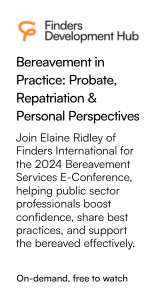“On a DoLS”
- Details
Alex Ruck Keene KC (Hon) reports on some mythbusting by what he says was a (rightly) exasperated Court of Protection.
In Re EM (Deprivation of Liberty, Care Planning & Costs) [2024] EWCOP 76 (T2), HHJ Burrows helpfully busted some disturbingly frequent myths about DoLS. The case concerned a young woman, personalised by the court with the name “Emma,” and for present purposes, the central passages of wider relevance are these:
45. Having read the documents in this case, including those concerned with Emma’s own wishes and feelings, it seems to me the Court needs to be very clear in the language it uses.
46. The acronym DOL (or DoL) or its plural “DoLs” comes from the wording of Article 5 of the European Convention and refers simply to “deprivation of liberty”. The term “DOLS” refers to Schedule A1 of the MCA, otherwise known as the Deprivation of Liberty Safeguards. Emma is therefore subject to an order that authorises her deprivation of liberty, which could be called a DoL or DoLs order. She is not on a DOLS.
47. I hope not to confuse things further by explaining my understanding of the law. The MCA requires decision makers to make decisions for people who cannot make those decisions for themselves, where necessary (see ss 1-4 MCA). That includes issues over residence and care. It enables decision makers to decide on care plans that meet the best interests of the person concerned. That is the starting point. A care plan in P’s best interests, and the one which adopts the least restrictive option is what the decision maker must choose. If that plan involves or may involve a deprivation of P’s liberty, then it needs to be authorised and will be if it is necessary and proportionate in furthering P’s best interests.
48. It can be authorised under Schedule A1 of the MCA if the person is 18 or older and is detained in a care home or hospital. These are the DOLS. If the person is not yet 18 or is somewhere other than a hospital or care home, the Court must decide whether to authorise the care plan under ss 15 and 16 MCA.
49. The inherent jurisdiction has been used in Emma’s case to authorise her deprivation of liberty outside a statutory regime. These are also known as DoL or DoLs orders, with good reason.
50. Such authorisation, by any of these avenues, is permissive rather than mandatory. Or put another way, it enables the carer to use restrictions that amount to a deprivation of liberty, it does not require them to do so.
51. Therefore, the expression “on a dol” or “under a dol”, whilst perfectly legitimate abbreviations, must be understood properly and within that context. To be “on” or “under a dol” means to be subject to an order (or authorisation) approving and authorising a care plan which allows the carer to use restrictions that amount to a deprivation of liberty in the best interests of P. Clearly, the emphasis here is on the care plan itself and not the legal status of the restrictions that can be used. The care plan to be used is still a decision to be made by the carer/clinician/MDT in charge on the basis of what they consider to be needed in the circumstances that arise, and what is in P’s best interests.
52. Unfortunately, when the Court authorises such a care plan that amounts to a “dol” it is seen as being mandatory, like the Court has imposed a prison sentence. That gives rise to an unfortunate misconception on the part of the people who are the subject of these orders that the order, while it remains in place, requires those providing care to keep them actually locked in and locked up.
53. In some extreme cases coming before the National DOLs List and the Court of Protection it is easy to see why the misconception arises, particularly when the options for care are all inadequate, P’s behaviour is extreme, and LAs are fighting a very difficult and seemingly endless battle to keep P safe.
54. However, the principle is always the same. The Court will ask questions like: what is the care plan and how has it been arrived at? What are the risk assessments of alternative plans compared with this one? What does P think? What do other relevant people under s. 4 MCA think? Does the LA/NHS provider (as the case may be) consider the care plan to be the least restrictive option that will address P’s needs? What steps are being taken to reduce the need for such an intense care plan? The Court is obliged to scrutinise the answers given.
55. It is important to emphasise though that the care plan is King here. That is how Emma’s case should be seen. Considering Dr Khan’s engagement with Emma, an attempt is being made to give effect to what Emma wants in her care plan. She wants less restriction. If the clinicians, social workers, and other relevant professionals can work with Emma (and perhaps her family) to devise a care plan that does not amount to a deprivation of her liberty, and that care plan is in her best interests, then the Court will authorise it.
What particularly troubled HHJ Burrows was that:
56. The LA in this case is (I think) planning to move Emma to a place where there will be no need for “a dols”. However, through their counsel it was made clear to me that could only happen if I “lifted the dols”. This is incorrect. If the LA devises a care plan whereby Emma can move to another place where she will not be deprived of her liberty, there will be no need for the Court to authorise her deprivation of liberty. If a plan is devised at her present placement that does not amount to a deprivation of Emma’s liberty, the Court will not need to authorise one.
57. So profound has the language and the law been confused in this area, that these two statements of what should be the blindingly obvious, appear necessary.
58. It is important to remember that the Court is in place to ensure that disputes about capacity, best interests and the proportionality of restrictions are resolved as well as ensuring that there is a consistent scrutiny of a care plan that imposes significant restrictions on P.
59. Once again, however, care planning and the assessments and consultations around that are what is most important. That means Emma is central to the process. By focusing on the Court and the making and un-making of a “dol”, Emma and other people in her position are made to feel peripheral to the whole process. Many of them conclude that “getting off the dol” is essential before they can be part of the process. Many feel that when on a “dol” they are filed away and forgotten only to be taken out for scrutiny when someone else makes a fuss.
60. In fact, the whole MCA/Court of Protection process, particularly when concerned with Article 5 rights, is about ensuring that these care planning decisions are constantly reevaluated to ensure that P’s best interests are served through the least restrictive option, and P is central to the whole process.
61. At the October hearing, I therefore approved the care plan I was invited to approve at the placement. That care plan amounts to a deprivation of Emma’s liberty not because the Court says it does, but because the restrictions imposed under the care plan are said to be necessary, proportionate and in her best interests according to those involved in her care, and they place Emma under continuous supervision and control and she is not free to leave the placement.
62. The Court approves the restrictions, it does not create them.
Separately, HHJ Burrows was exercised by the “serial breaches” by the local authority of directions made in advance of the relevant hearing, and came to the conclusion that the threshold for the making of a costs order had been met:
72. […] because of the wholesale breaches of the order made to ensure the hearing in September was not wasted. As a result, it was wasted. That non-compliance took place within the context of the earlier complaints made by the OS in July. The October hearing went someway towards ensuring the case was back on track, but that simply emphasises the waste the September hearing was. For those reasons I am satisfied that I should depart from the general rule and make an order for costs against the LA.
Comment
HHJ Burrows’ observations about what DoLS (and orders made by the courts here) actually mean, as opposed to what they are understood to mean, are trenchant. That they were required is, frankly, more than a little depressing.
Alex Ruck Keene KC (Hon) is a barrister at 39 Essex Chambers. This article first appeared on his Mental Capacity Law and Policy blog.













































